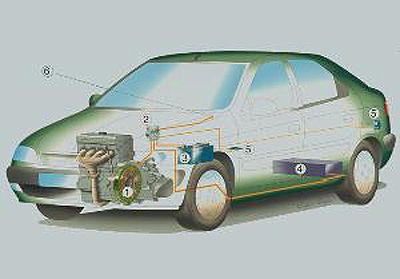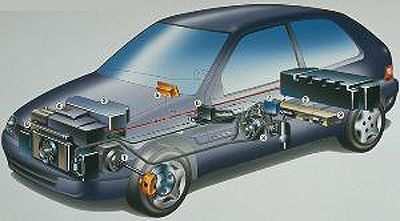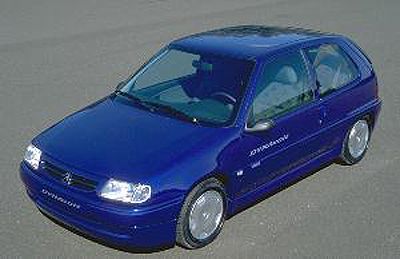Heuliez, a name synonymous with innovation and excellence in the automotive industry, has been a driving force behind groundbreaking technologies and sustainable solutions. In this article, we delve into the history, achievements, and contributions of Heuliez, showcasing how this company has played a pivotal role in shaping the future of transportation.
Origins and Legacy:
Heuliez, a name deeply rooted in the automotive industry, began its illustrious journey in 1920 under the visionary leadership of Adolphe Heuliez. Initially, the company focused on crafting horse-drawn carts, displaying an early commitment to quality craftsmanship. As the automotive landscape evolved, so did Heuliez, transitioning into a carrosserie—a production and design unit for various automakers.
Specializing in short series production for niche markets, Heuliez carved a niche for itself in creating unique vehicles, including convertibles and station-wagons. This adaptability and niche focus set the stage for the company's enduring legacy.
Evolution of Heuliez: From Carts to Cars
In 1925, Heuliez assembled its first car, a Peugeot 177B, marking the company's foray into the automotive manufacturing sector. A significant milestone followed when Heuliez established a subsidiary dedicated to bus production, later sold in 1980 and known today as Heuliez Bus.

Over the years, Heuliez demonstrated its versatility, ultimately becoming renowned for its retractable roofs, notably for the Peugeot 206 CC, with an impressive production of 350,000 units. The company expanded further, producing entire cars like the Opel Tigra. Since 1985, Heuliez has proudly manufactured over 450,000 cars, a testament to its enduring commitment to innovation and quality.
Challenges and Restructuring
The latter years of Heuliez's operation were not without challenges. Despite its success, poor sales of the Opel Tigra led to workforce reductions and production adjustments. Opel requested a decrease in output, and by the end of 2006, the company faced the difficult task of balancing production with market demands.
In October 2007, Heuliez sought protection from creditors, signaling a challenging period for the company. In a bid for revival, Argentum Motors pledged a substantial investment in 2008. However, the anticipated financial infusion did not materialize, leading to further complexities for the company.
A Change in Direction
Heuliez's main production plant, located in Cerizay in the Deux-Sèvres département, remained at the heart of its operations. In 2010, recognizing the shifting market dynamics, Heuliez made a strategic decision to exit the convertible rooftop business. Simultaneously, the electric vehicle elements of the company found a new home within the Franco-German group Baelen Gaillard Industrie-ConEnergy-Kohl.
This transition led to the birth of Mia Electric, a venture that aimed to continue Heuliez's commitment to electric mobility. Unfortunately, Mia Electric ceased operations in 2014, marking the end of an era for this innovative branch of Heuliez's legacy.
Electric Mobility Pioneers:
One of the most notable aspects of Heuliez's legacy is its commitment to sustainable and electric mobility. The company has been a pioneer in developing electric vehicles (EVs) and electric powertrain solutions since the early 1980s. Heuliez's electric buses and cars have not only contributed to reducing carbon footprints but have also set new standards for efficiency and performance in the electric vehicle sector.
Active Wheel Technology: Revolutionizing Electric Mobility
1. In-Wheel Electric Motors:One of the defining features of the Active Wheel technology is the integration of electric motors directly into the wheels. This eliminates the need for a traditional engine compartment and drivetrain, allowing for more flexibility in vehicle design and freeing up space within the vehicle.
2. All-in-One Solution:The Active Wheel serves as an all-in-one unit, housing the electric motor, suspension, and braking components. This compact design simplifies the overall structure of the vehicle, making it more agile and efficient. Additionally, it contributes to a lower center of gravity, enhancing stability and handling.
3. Enhanced Efficiency and Range:The integration of electric motors within the wheels offers advantages in terms of energy efficiency. Active Wheel technology minimizes energy loss associated with traditional drivetrain systems, resulting in improved overall efficiency. This, in turn, positively impacts the vehicle's range, a critical factor in promoting widespread adoption of electric vehicles.
4. Intelligent Suspension System:The Active Wheel system incorporates an intelligent suspension system that adapts to varying road conditions in real-time. This not only enhances ride comfort but also contributes to improved vehicle dynamics and safety. The responsiveness of the suspension system is a testament to the technological sophistication embedded in the Heuliez WILL concept car.
5. Regenerative Braking:The Active Wheel technology includes regenerative braking capabilities, allowing the vehicle to recover and store energy during deceleration. This feature enhances the overall energy efficiency of the electric vehicle and contributes to a more sustainable driving experience.
Heuliez WILL Concept Car: Embodying Innovation
The Heuliez WILL concept car served as a platform to showcase the transformative potential of the Active Wheel technology. Beyond its technological prowess, the WILL design embraced a modern and aerodynamic aesthetic, reinforcing Heuliez's commitment to blending innovation with stylish automotive design.
Future Implications and Industry Impact
The Heuliez WILL concept car, featuring the Active Wheel technology, has left a lasting impact on the electric vehicle landscape. This innovative approach to propulsion and suspension systems has influenced subsequent developments in the electric mobility sector. As the automotive industry continues to evolve, concepts like the Heuliez WILL and Active Wheel technology remain instrumental in shaping the future of sustainable and efficient transportation.
Citroën Xsara Dynactive:
The Citroën Xsara Dynactive likely benefited from Heuliez's expertise in design and production. Heuliez may have contributed to specific modifications or features that set the Dynactive apart from the standard Xsara model. This collaboration could have focused on enhancing the car's aesthetics, functionality, or both.
Citroën Xsara Dynalto:
The Xsara Dynalto, another variant of the Citroën Xsara, may have undergone a transformation or customization by Heuliez. This could include modifications to the interior, exterior, or even the addition of unique features to cater to a particular market or customer segment.
Citroën Saxo Dynavolt:
Heuliez's involvement in the Citroën Saxo Dynavolt likely extended to design and production aspects, potentially incorporating special features or modifications. The collaboration may have aimed at creating a distinctive version of the Saxo, showcasing both Heuliez's innovation and Citroën's commitment to providing diverse offerings to consumers.



The Significance of Collaborations:
Collaborations between automakers and external firms like Heuliez play a crucial role in the automotive industry. They allow companies to leverage specialized expertise, share resources, and introduce unique variations of existing models. These collaborations often result in limited editions or special trims that appeal to specific market preferences.
Legacy of Heuliez and Citroën Collaborations:
Heuliez's history of working with Citroën exemplifies the adaptability and creativity necessary to stay competitive in the automotive market. The legacy of these collaborations is not only evident in the specific models mentioned but also in the broader influence on design, innovation, and customization within the industry.
The collaboration between Heuliez and Citroën in the development of models like the Xsara Dynactive, Xsara Dynalto, and Saxo Dynavolt highlights the industry's collaborative spirit and the pursuit of offering diverse and unique vehicles to consumers. As automotive technologies and consumer preferences continue to evolve, such partnerships remain instrumental in shaping the future of mobility.
